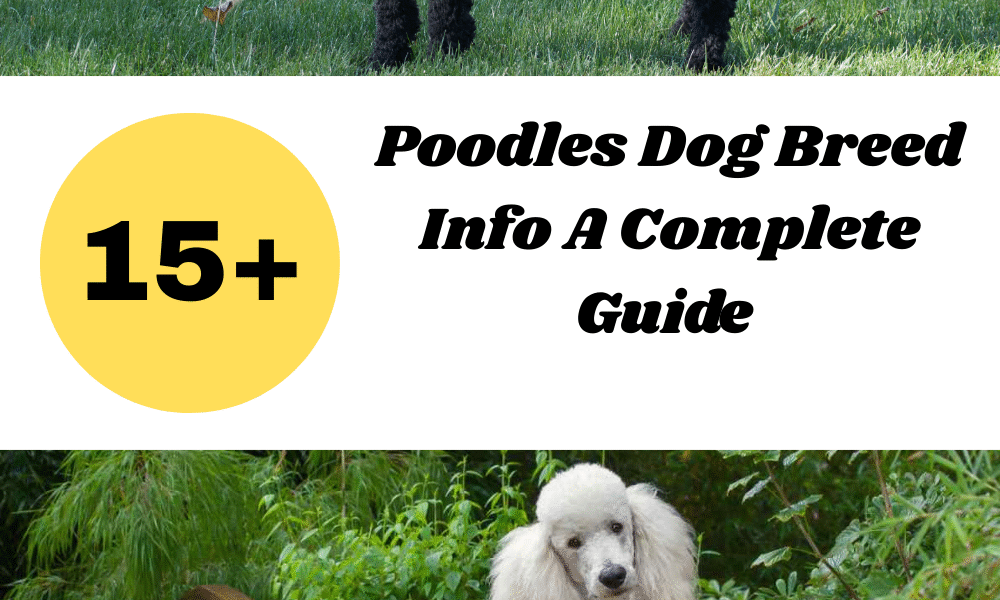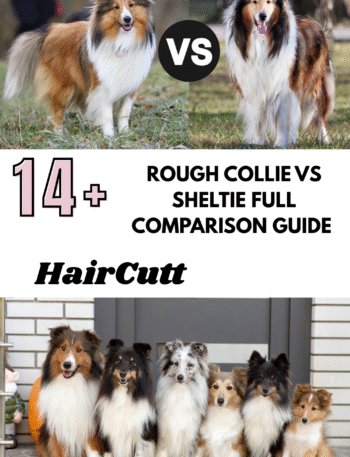Introduction
Graceful, intelligent, and endlessly versatile—the Poodle is far more than the stylish dog you see in show rings. Known for their hypoallergenic curly coats, remarkable intelligence, and affectionate personalities, Poodles consistently rank among the world’s most popular breeds. But there’s more to them than meets the eye.
This complete guide provides the most advanced and updated information available in 2025, combining breed history, genetics, temperament, grooming, health, training, lifestyle tips, and the latest insights from veterinary and canine research. If you’re considering welcoming a Poodle into your life—or you already share your home with one—this is the ultimate resource you need.
History and Origins of the Poodle
From Water Dogs to Companions
The Poodle’s ancestry dates back several hundred years. Although most people associate the breed with France, modern DNA research reveals their true roots lie in Germany, where they were bred as water retrievers.
The breed’s name itself comes from the German word “Pudel”, meaning “to splash in water.” By the 16th century, Poodles had spread across Europe, becoming especially beloved in France, where they were refined into the elegant, athletic, and versatile dogs we know today.
Genetic Relatives
Recent studies (2023–2025) show close genetic links between Poodles and other water dogs such as:
- Barbet (French water dog)
- Portuguese Water Dog
- Spanish Water Dog
This shared ancestry explains their curly coats, strong swimming ability, and high adaptability.
Role in Human Society
Over centuries, Poodles transitioned from hunters to:
Poodle Varieties
Poodles are unique because they come in multiple sizes, all sharing the same breed standard in terms of temperament, coat, and intelligence.
Official Sizes
- Standard Poodle
- Height: 15+ inches
- Weight: 40–70 pounds
- Originally bred for hunting and retrieving.
- Miniature Poodle
- Height: 10–15 inches
- Weight: 10–15 pounds
- Historically kept by travelers and performers due to their adaptability.
- Toy Poodle
- Height: under 10 inches
- Weight: 4–6 pounds
- Popular as lap dogs and companions for urban living.
Unofficial but Recognized Varieties
- Moyen (Klein) Poodle: Medium-sized, between Miniature and Standard, popular in Europe.
- Teacup Poodle: Extremely small, not officially recognized, often bred for companionship but can carry health risks.
Appearance and Coat
Coat Qualities
Poodles are famous for their curly, dense, single-layer coat, which:
- Produces less dander, making them more suitable for allergy sufferers.
- Grows continuously like human hair, requiring regular grooming.
- Protects against cold water, a trait from their water retriever ancestry.
Coat Colors
The American Kennel Club (AKC) recognizes multiple colors, including:
- Black, white, cream, brown, apricot, red, silver, gray, café-au-lait, and blue.
- Parti (two-tone), phantom, and merle patterns are becoming more common, though some are controversial in show standards.
Temperament and Personality
Poodles are renowned for their intelligence, loyalty, and playful spirit.
Key Traits
- Highly intelligent – ranked #2 in canine intelligence (behind Border Collies).
- Trainable – masters commands quickly, excelling in obedience, agility, and even scent detection.
- Affectionate – bond deeply with their families, often forming strong attachments to one person.
- Alert and protective – natural watchdog tendencies without being overly aggressive.
Suitability for Families
- Excellent with children when socialized early.
- Adaptable to apartments (Toy/Miniature) and larger homes (Standard).
- Can coexist with other pets when introduced properly.
Grooming and Maintenance
One of the defining features of Poodles is their coat, which requires consistent grooming.
Grooming Frequency
- Professional grooming every 4–6 weeks.
- Brushing daily to prevent matting.
Popular Haircuts
- Continental Clip (show style).
- English Saddle Clip (traditional).
- Puppy Cut (uniform, easy maintenance).
- Teddy Bear Cut (rounder, softer appearance).
- Sporting Clip (practical for active Poodles).
Skin & Coat Care
- Use mild, pH-balanced shampoos to prevent dryness.
- Regular ear cleaning—Poodles are prone to ear infections due to hair growth in the ear canal.
Health and Lifespan
General Lifespan
- Standard Poodles: 12–15 years
- Miniature Poodles: 13–16 years
- Toy Poodles: 14–18 years
Common Health Concerns
- Hip Dysplasia (mainly Standards).
- Progressive Retinal Atrophy (PRA).
- Addison’s Disease.
- Epilepsy.
- Cushing’s Disease.
- Patellar Luxation (small Poodles).
2025 Veterinary Insights
Recent research highlights that diet, early screening, and genetic testing can extend a Poodle’s lifespan significantly. Responsible breeders now commonly test for PRA, hip health, and endocrine disorders before breeding.
Nutrition and Diet
Feeding Guidelines
- Standards: 3–4 cups of high-quality food daily.
- Miniatures: 1–2 cups daily.
- Toys: ½–1 cup daily.
Nutritional Needs
- Protein-rich diet to support muscle and coat health.
- Omega-3 fatty acids for skin and joint health.
- Joint supplements recommended for Standard Poodles.
Raw, Kibble, or Home-Cooked?
- Raw diets improve coat quality but require careful balance.
- High-quality kibble ensures convenience and balanced nutrition.
- Home-cooked diets can work if formulated with veterinary guidance.
Training and Intelligence
Cognitive Abilities
Poodles are among the fastest learners in the canine world:
- Can learn new commands in under 5 repetitions.
- Retain commands with 95% accuracy.
- Excel in problem-solving and memory tasks.
Training Focus
- Obedience training (sit, stay, recall).
- Agility & sports (flyball, dock diving).
- Service roles (therapy dogs, guide dogs, emotional support).
Mental Stimulation
Without stimulation, Poodles may become anxious or destructive. Puzzle toys, scent work, and advanced training keep their minds sharp.
Lifestyle and Exercise
Exercise Requirements
- Standards: 60–90 minutes daily.
- Miniatures: 30–60 minutes daily.
- Toys: 20–40 minutes daily.
Best Activities
- Swimming (natural retrievers).
- Fetch and retrieval games.
- Agility courses.
- Long walks or hikes (Standards).
Poodles in Modern Culture
- Once circus dogs, now social media stars—millions of TikTok and Instagram accounts are dedicated to creative Poodle grooming and training.
- Featured in films, art, and literature for centuries.
- Remain symbols of elegance, intelligence, and companionship.
Buying, Adoption, and Costs
Choosing a Breeder
Look for breeders who:
- Perform health testing.
- Provide early socialization.
- Avoid unethical breeding practices (puppy mills).
Adoption
- Many Poodles and Poodle mixes are found in rescues.
- Adoption is a responsible option, often with lower costs.
Cost Breakdown (2025 Estimates)
- Puppy price: $1,500–$3,500 (varies by size & region).
- Annual care cost: $1,500–$3,000.
- Lifetime cost: $20,000–$40,000.
FAQs About Poodles
1. Are Poodles really hypoallergenic?
Yes, but no dog is 100% allergy-free. Poodles shed less dander, making them more tolerable for allergy sufferers.
2. Which size Poodle lives the longest?
Toy and Miniature Poodles typically outlive Standards.
3. Can Poodles be left alone?
Not for long periods. They thrive on companionship and may develop separation anxiety.
4. What is the rarest Poodle color?
Blue and red Poodles are among the rarest.
5. How often should a Poodle be groomed?
Professional grooming every 4–6 weeks, plus daily brushing at home.
Conclusion
The Poodle is a remarkable combination of brains, beauty, and companionship. Whether you prefer the elegance of a Standard, the adaptability of a Miniature, or the charm of a Toy, each Poodle brings intelligence, loyalty, and joy into a household.
With proper care, grooming, training, and health management, a Poodle can be a lifelong friend and family member for well over a decade.
In 2025, as trends in responsible breeding and canine health continue to advance, the Poodle remains one of the world’s most beloved and versatile breeds—a dog that can thrive in almost any environment, provided it is loved, exercised, and cared for.




